Acrylic painting is a popular painting medium due to its versatility and quick drying time. It can be used on various surfaces, including canvas, paper, and wood. However, when it comes to painting on wood, it is essential to prime the surface before applying acrylic paint.
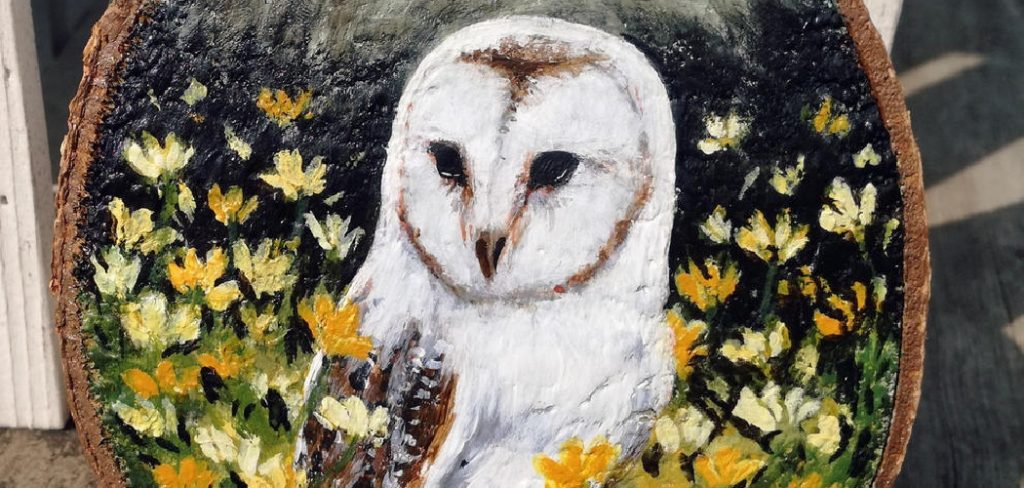
Priming wood for acrylic painting ensures better adhesion and helps prevent warping or cracking of the wood surface. This guide will discuss the steps on how to prime wood for acrylic painting and provide some tips for achieving the best results. If you’re new to acrylic painting or looking for ways to improve your painting techniques, this guide is for you.
Why Prime Wood for Acrylic Painting?
Acrylic paint is a water-based medium that contains pigments suspended in an acrylic polymer emulsion. This type of paint dries quickly and forms a hard, durable layer when dry. However, the paint may not adhere well if applied directly on an unprimed wood surface and can easily peel or chip off.
Priming the wood creates a barrier between the wood and the paint, allowing for better adhesion. It also helps prevent the wood from absorbing moisture from the paint, which can cause warping or cracking over time. Additionally, priming can achieve a smoother painting surface and improve the vibrancy of colors.
Understanding Wood Surfaces
Before we dive into the steps for priming wood, it is essential to understand the different types of wood surfaces and their characteristics. Two main types of wood surfaces are used for painting – softwood and hardwood.
Softwoods, such as pine or cedar, have a more porous surface and tend to absorb moisture from paint more easily. They also have a slightly rougher texture, challenging to achieve a smooth painting surface.
Hardwoods, like oak or maple, have a denser and smoother surface. They are less absorbent and require less preparation for painting than softwoods.
It is essential to consider the type of wood you’re using before priming and adjust your techniques accordingly.
Tools and Materials You Will Need to Prime Wood for Acrylic Painting
- Wood surface of your choice (can be a pre-made wooden panel or a cut piece of plywood)
- Sandpaper (medium to fine grit)
- Tack cloth
- Gesso primer
- Large flat brush or foam roller
- Palette knife (optional)
Step-by-step Guidelines on How to Prime Wood for Acrylic Painting
Step 1: Prepare the Wood Surface
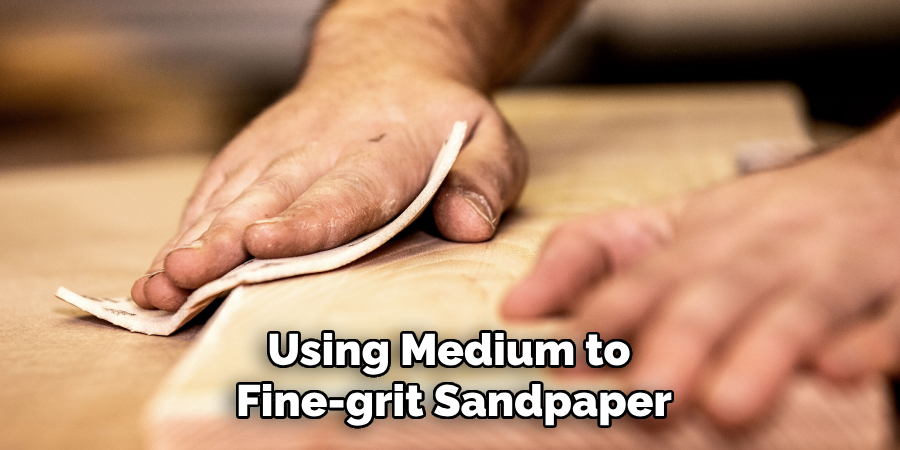
Before priming, sand the wood surface using medium to fine-grit sandpaper. This will help smooth out any rough spots and open up the pores of the wood for better primer penetration. After sanding, wipe the surface with a tack cloth to remove any dust or debris. If you’re using a pre-made wooden panel, it may come sanded and ready to prime. Preparing the wood surface is crucial for achieving a smooth and even painting surface.
Step 2: Apply Gesso Primer
Gesso primer is specifically designed to prepare surfaces for painting. It comes in white and clear forms, with the latter being more suitable for wood as it allows the natural grain to show through. You can apply gesso primer with a large flat brush or a foam roller. If you prefer a smoother surface, you can use a palette knife to apply the gesso in thin layers, allowing each layer to dry before applying the next one. This technique also helps fill any small cracks or imperfections on the wood surface.
Step 3: Allow the Primer to Dry
It is essential to let the primer dry completely before painting on top of it. Follow the manufacturer’s instructions for drying time, but overnighting may take a few hours. This step is crucial as painting on a wet or partially dry primer can ruin the surface and affect the adhesion of your paint. If you’re in a rush, you can use a hairdryer on low heat to speed up the drying process.
Step 4: Sand and Repeat (Optional)
If you want an extra smooth surface, you can lightly sand the dried primer with fine-grit sandpaper. Then, repeat the priming process with another layer of gesso. This step is optional but can help achieve a professional-looking painting surface. Make sure to let the second layer of primer dry completely before proceeding. This step can be repeated until you achieve the desired smoothness.
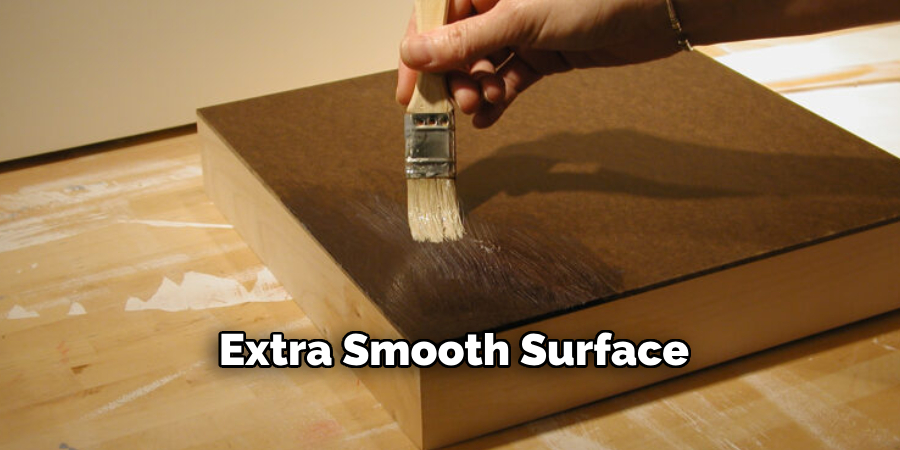
Following these steps will ensure that your wood surface is properly primed and ready for acrylic painting. It may seem like an extra step, but it can make a significant difference in the quality and longevity of your artwork. Remember to always follow proper safety precautions when working with wood and art supplies. Happy painting!
Additional Tips and Tricks to Prime Wood for Acrylic Painting
- If you are using plywood or a cheaper wood, it is recommended to sand the surface thoroughly before priming. This will help create a smoother and more even surface for painting.
- Use a high-quality primer specifically designed for wood surfaces. This will ensure better adhesion and longer-lasting results. This can also help prevent any wood grain from showing through the paint.
- Consider using a tinted primer for more textured wood surfaces, such as rough cut or reclaimed wood. This will help fill in any grooves or imperfections and create a smoother surface for painting.
- Clean the wood surface thoroughly before applying the primer to remove dirt, dust, or debris. This will help the primer adhere better and create a cleaner overall finish.
- When applying the primer, use smooth and even strokes in one direction to avoid any brush marks or uneven texture on the surface.
- When working with wood with knots or resin patches, consider sealing them with a shellac-based primer before applying the acrylic primer. This will prevent the knots from discoloring or bleeding through the paint.
- Allow the primer to dry completely before starting to paint. This can take anywhere from 1-2 hours, depending on the type and brand of primer used.
- If you notice any areas where the wood grain is still showing through after priming, lightly sand those areas and reapply another layer of primer.
- Use a sealer or varnish as a final protective coat over your acrylic-painted wood surface. This will help protect the painting from scratches, moisture, and UV rays.
- And lastly, have fun with your acrylic painting on wood! Experiment with different techniques and colors to create unique and beautiful art pieces.
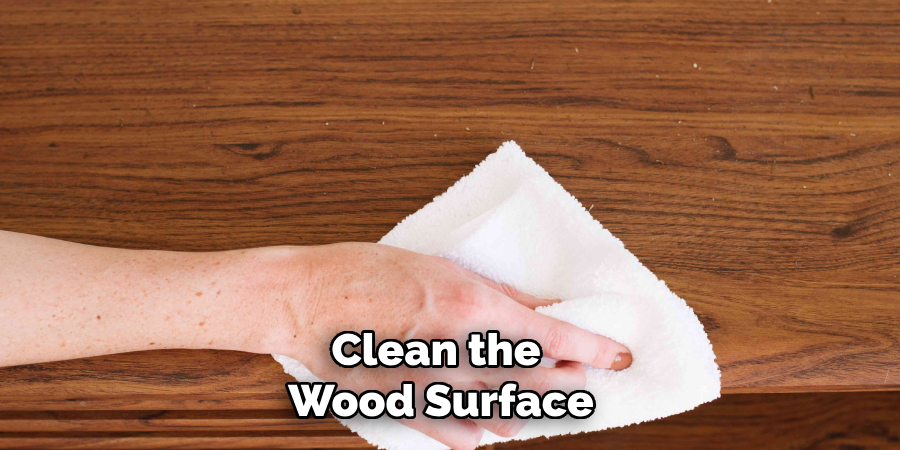
Following these additional tips and tricks will ensure a successful and long-lasting result when priming wood for acrylic painting. Remember to always choose high-quality materials and take the time to properly prepare the wood surface before beginning your painting. With practice and patience, you can create stunning works of art on wood with the help of acrylic paint. Happy painting!
Things You Should Consider to Prime Wood for Acrylic Painting
- The first thing you should consider when priming wood for acrylic painting is the wood you use. Different types of wood have different textures and absorb paint differently. Choose a smooth, non-porous wood such as birch or maple for the best results.
- Another important factor to consider is the type of primer you use. Acrylic gesso is typically recommended for priming wood as it creates a suitable surface to which the acrylic paint can adhere.
- Before applying the primer, thoroughly clean and sand the wood surface. This will help remove dirt or imperfections and create a smooth, even surface for painting.
- It is also important to consider the size and shape of your wood surface. If you are working with a larger piece, using a roller to apply the primer instead of a brush may be beneficial. This will help ensure an even application and avoid brush strokes on the final painting.
- Also, if needed, thin the primer properly before application. This will help prevent the primer from becoming too thick and not adhering properly to the wood surface.
- Once you have applied the primer, allow it to fully dry before painting. This may take anywhere from 30 minutes to a few hours, depending on the type of primer used and environmental factors such as humidity.
- After the primer has dried, you can then begin painting with acrylics on the primed wood surface. The primer will help the paint adhere better and prevent it from being absorbed too quickly into the wood.
- Multiple coats of primer may be needed Depending on the type of wood and desired finish. It is always better to apply thin, even coats rather than one thick coat to ensure proper adhesion and avoid drips or brush marks.
- It is also recommended to lightly sand the primed surface before applying subsequent coats of primer or paint. This will help create a smooth surface and allow for better adherence to each layer.
- Finally, consider sealing your finished acrylic painting on wood with a varnish or clear coat to protect it from fading or damage over time. This will also help enhance the colors and add a glossy finish to your artwork.
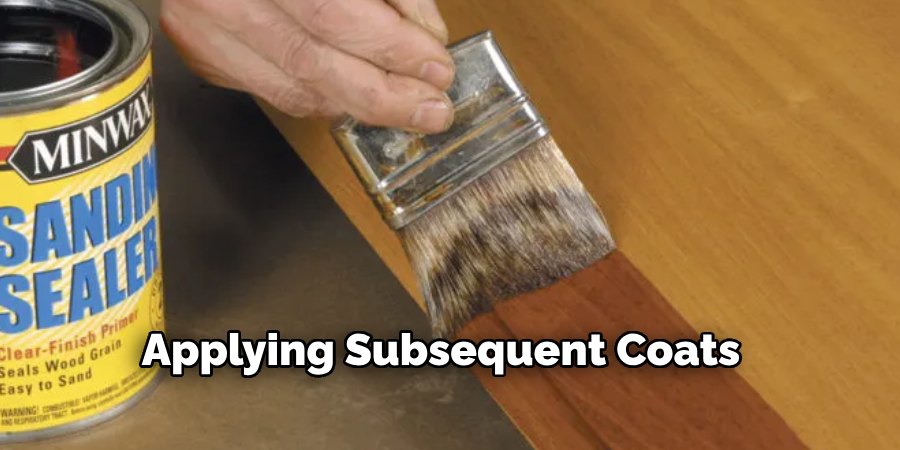
By following these considerations, you can effectively prime wood for acrylic painting and achieve professional-looking results. Remember that experimentation and practice may be needed to find the best techniques for your specific project. Still, you can create beautiful paintings on wood surfaces with patience and attention to detail. Happy painting!
Maintenance Tips for Acrylic Painted Wood
1. Regular Cleaning:
Regular cleaning is essential for maintaining the appearance and durability of acrylic-painted wood surfaces. Use a soft, lint-free cloth or sponge to gently wipe down the surface, removing any dust or dirt that may have accumulated. Avoid using harsh chemicals or abrasives as they can damage the paint. Use a mild soap and water solution for tougher cleaning jobs if necessary.
2. Avoid High Temperatures:
Acrylic paint can be sensitive to high temperatures, causing it to soften and potentially peel off the wood surface. It is important to keep painted wood surfaces away from direct sunlight and heat sources like radiators or stoves. Use curtains or blinds to block out direct sunlight and keep the room at a moderate temperature.
3. Touch Up as Needed:
Over time, acrylic paint may chip or fade on wood surfaces due to normal wear and tear. To maintain the appearance of your painted wood, regularly inspect for any areas that may need touch-ups. Use a small brush and matching color paint to cover any chips or scratches, and blend it in with the surrounding paint to restore the surface.
4. Use a Protective Coating:
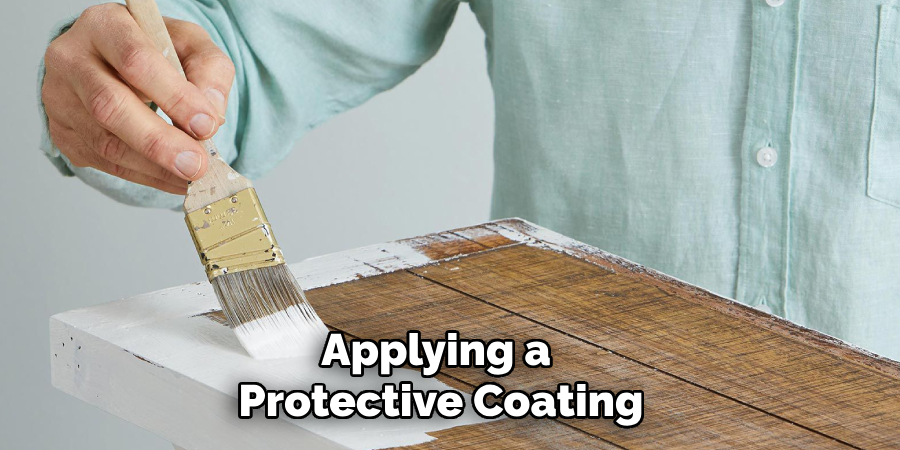
Applying a protective coating on top of acrylic-painted wood surfaces can help prevent damage from moisture, scratches, and UV rays. There are several options for protective coatings, such as varnish, polyurethane, or wax. Choose one that is suitable for your specific project and apply it according to the manufacturer’s instructions. Using a protective coating can also enhance the shine and color of the paint.
5. Store Properly:
If you need to store painted wood items, ensure they are stored in a cool, dry place. Avoid stacking or placing heavy objects on top of them, as this can cause damage to the paint. It is also important to keep them away from areas with fluctuating temperatures or high humidity, as this can affect the paint’s integrity.
6. Avoid Abrasive Materials:
Avoid using abrasive materials like steel wool or rough scrubbing brushes when cleaning or maintaining acrylic-painted wood surfaces. These can scratch and damage the paint, causing it to lose its shine and potentially peel off the surface. Stick to soft cloths and gentle cleaning solutions to avoid causing any harm.
7. Handle with Care:
Lastly, it is important to handle acrylic-painted wood surfaces with care to prevent accidental damage. Avoid dragging or sliding objects across the surface, as this can also cause scratches and chips in the paint. Use coasters or placemats under hot dishes, and use caution when moving items on or off the surface to prevent any potential damage.
Following these maintenance tips can help ensure that your acrylic-painted wood surfaces remain in excellent condition for years to come. So, keep them clean and protected, and handle them carefully to maintain the beauty and integrity of your painted wood items. Remember to refer to these tips for future touch-ups or maintenance needs. Happy painting!
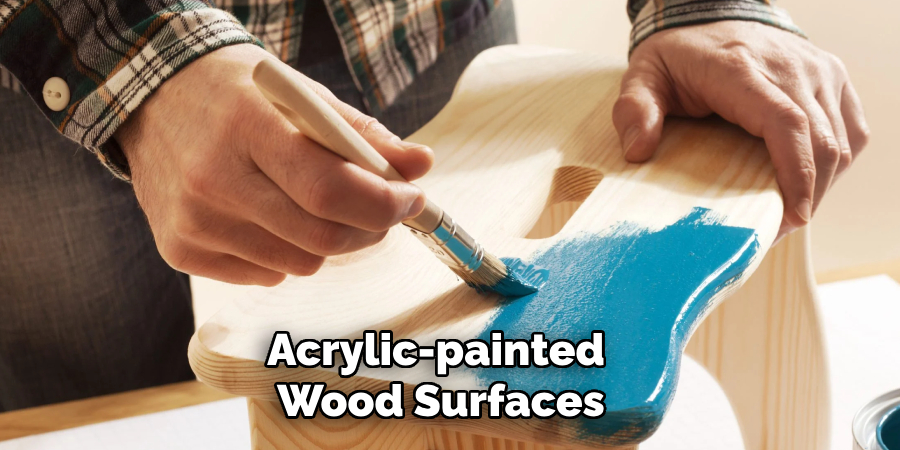
Frequently Asked Questions
What is the Purpose of Priming Wood Before Acrylic Painting?
Priming wood creates a smooth and even surface for the paint to adhere to, preventing any absorption into the wood and ensuring better color vibrancy. It also helps to prevent the wood from warping or cracking due to exposure to moisture in the paint.
How Do I Choose the Right Primer for Wood?
When choosing a wood primer, it is important to select one specifically designed for use with acrylic paint. Look for a water-based primer, as oil-based primers may cause issues with adhesion and drying time. Ensure that the primer is suitable for use on wood surfaces and has good coverage.
How Do I Prepare the Wood for Priming?
Before priming, it is important to properly prepare the wood surface. Start by sanding the wood with fine-grit sandpaper to create a smooth and even surface. Then, remove any dust or debris from the surface using a tack cloth or damp rag. This will ensure that the primer adheres properly and creates a smooth finish.
How Do I Apply the Primer?
Apply an even coat of primer to the wood surface using a paintbrush or roller. Make sure to cover all areas and edges thoroughly. If needed, you can apply a second coat once the first coat is dry. Allow the primer to fully dry before proceeding with your acrylic painting.
Can I Skip Priming Wood for Acrylic Painting?
While it is possible to skip priming wood before acrylic painting, it is not recommended. The paint may only adhere properly with proper priming, leading to a less vibrant and durable finish. Additionally, the wood may be more susceptible to warping or cracking over time without a primer.
Can I Use Gesso as a Primer for Wood?
Yes, gesso can be used as a primer for wood before acrylic painting. However, it may not provide the same level of protection and coverage as a specialized acrylic paint primer. It is important to properly test and assess the results when using gesso as a primer on wood surfaces.
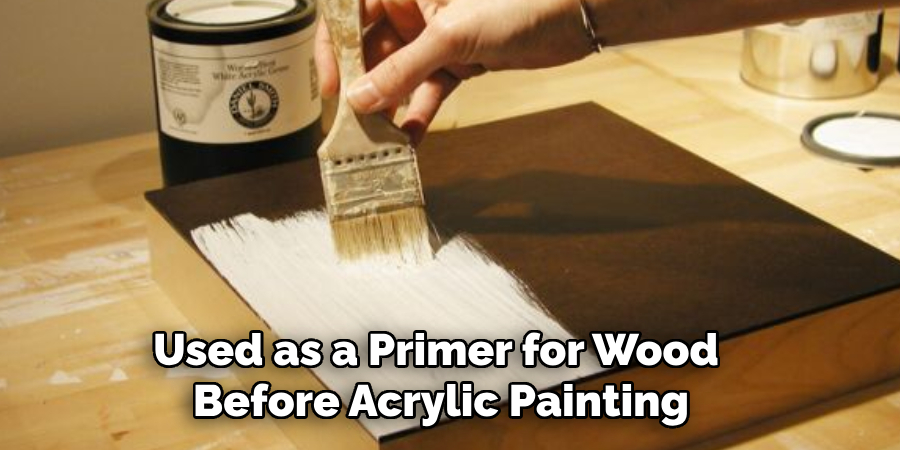
What Other Surfaces Can I Prime for Acrylic Painting?
In addition to wood, you can prime other surfaces such as canvas, paper, and some plastics before painting with acrylics. Each surface may require a different type of primer, so it is important to research and choose the appropriate one for your specific project.
Conclusion
Now you know how to prime wood for acrylic painting and why it is an important step in the painting process. Remember to choose the right primer, properly prepare the surface, and allow for proper drying time before starting your acrylic painting. With a well-primed surface, you can achieve beautiful and long-lasting results with your acrylic paintings on wood. Keep experimenting with different techniques and surfaces to continue improving your skills as an artist. Happy painting!
About the Author
Adrian Green, a lifelong woodworking enthusiast, shares his passion for the craft through The Woodenify Blog. With a foundation built on years of hands-on experience in his father’s woodworking shop, Adrian is dedicated to helping others learn and grow in the world of DIY woodworking. His approach to woodworking combines creativity, practicality, and a deep appreciation for the art of building with your own hands. Through his blog, he inspires individuals of all skill levels to embark on their own woodworking journeys, creating beautiful, functional pieces of furniture and décor.
Professional Focus
- Specializes in DIY woodworking projects, from furniture to home décor.
- Provides step-by-step guides and practical tutorials for woodworkers of all skill levels.
- Dedicated to helping readers build confidence and skill through easy-to-follow instructions and tips.
- Passionate about fostering a community of makers who can share, learn, and grow together.
Education History
- University of Craft and Design – Bachelor of Fine Arts (BFA) in Woodworking and Furniture Design
- Woodworking Apprenticeships – Extensive hands-on training with skilled craftsmen to refine carpentry and furniture making techniques.
- Online Courses & Masterclasses – Continued education in advanced woodworking techniques, design principles, and specialized tools
Expertise:
- DIY woodworking, carpentry, furniture making, and home décor projects.
- Creating accessible tutorials and guides for beginner to advanced woodworkers.
- Sharing the joys and satisfaction of woodworking, from raw materials to finished products.
